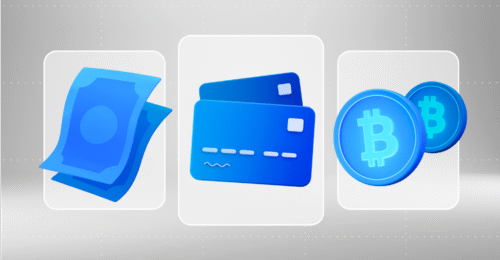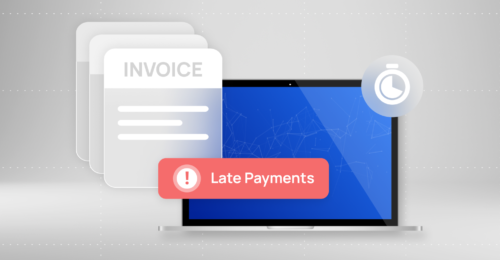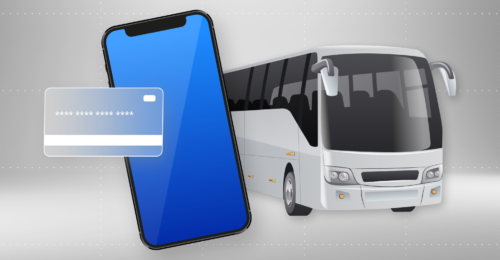- Payment gateway
- Blog
- Comprehensive Guide On The Merchant Onboarding Process
Comprehensive Guide On The Merchant Onboarding Process
In the digital market it is important to implement efficient and secure payment processing systems for businesses to grow. At the heart of these systems is the merchant onboarding process. This critical procedure involves integrating a business with a Payment Service Provider (PSP) or a payment gateway. It’s essential for setting up a payment system that’s both operationally effective and compliant with industry standards. Today Transferty’s experts will outline this path for merchants, explain the main procedures and describe the documents, required for the sufficient onboarding process
Understanding Merchant Onboarding
Current payment environment requires a well-considered approach to merchant onboarding as a key for businesses to succeed. This approach should enable them to offer a straightforward and secure customer experience, comply with industry norms, and foster robust partnerships with payment entities, which in turn can drive growth and customer loyalty
Merchant onboarding is pivotal in enhancing operational efficiency, customer satisfaction, and risk management. Inadequate onboarding can cause transaction delays or failures, heightened fraud risk, and breaches of regulatory compliance. Such issues could negatively impact a business reputation, lead to financial losses, or result in penalties. On the other hand, this process, when executed well, minimises the risks of fraud, transaction delays, and non-compliance fines, which are crucial for maintaining a business’s reputation and avoiding financial setbacks. Here are the essentials you need to understand
Key Players in Merchant Onboarding
For an effective merchant onboarding experience, understanding the roles of key participants and their interactions is crucial. These parties collaborate to maintain a secure and efficient payment processing system:
Merchants
These are the businesses or service providers needing to accept customer payments. They partner with PSPs or payment gateways for processing payments through various channels
PSPs
PSPs provide payment processing solutions to merchants. They manage technical transaction aspects, like authorisation and settlement, and ensure adherence to industry standards and regulations
Payment Gateways
These are the technological platforms that enable secure transaction data transfer from the merchant’s systems to the PSP or bank. Their role includes encrypting sensitive information and ensuring its secure transmission during transactions
Acquiring Banks
These banks work with PSPs to process transactions for merchants. They are responsible for underwriting merchant accounts, evaluating business risk, and ensuring regulatory compliance
Card Networks
Networks like Visa or Mastercard, and others set the standards for card transactions and facilitate the settlement process between acquiring and issuing banks
Issuing Banks
These banks issue payment cards to customers and are responsible for transaction authorisation and funds transfer to the acquiring bank
Regulatory Bodies
Entities like the Payment Card Industry Security Standards Council (PCI SSC) create and enforce standards and regulations governing payment processing to protect consumers and maintain the integrity of the payment ecosystem

Each player plays a vital role in establishing a secure, efficient, and compliant payment processing environment
Preparation for Merchant Onboarding
Before initiating onboarding, businesses should gather all necessary documents to streamline the process. In Transferty, we collect such documentation from merchants who want to cooperate with us and pass it to PSPs. These documents are required to look for the best PSP for business needs, receive the response on the possible partnership, conditions and prices. Without this information it is impossible to integrate the payment processing technologies to the merchant resources
Essential information include:
- Company legal name and registration number
- Country of incorporation
- Processing URLs and target markets
- Desired Alternative Payment Methods, if any
- Expected monthly transaction volumes
- Processing history, ideally for the last 6 months or Solid business plan for start-ups
- Settlement currencies required and processing currencies
- Selected integration method
- Copies of relevant licences
- Additional details for specific industries or verticals
- Corporate documents and UBO/Directors documents

The Onboarding Process Steps
The merchant onboarding process involves a series of steps to establish a functional relationship between a business and a PSP or payment gateway. This process can be broken down into several key stages:

Pre-Onboarding Preparation
This stage involves gathering necessary information and documentation. Additionally, research PSPs and payment gateways, like Transferty to identify the one that best suits your business’s specific needs
Merchant Application and Review
You’ll need to submit an application to Transferty or your chosen PSP, providing the above mentioned documentation. Then we or your chosen PSP review your application to ensure your business fulfils the criteria
Compliance and Risk Assessment
The PSP or acquiring bank carries out a thorough risk assessment of your business. They consider various factors such as business type, transaction volumes, chargeback history, and adherence to relevant regulations and standards. This step may include background checks, credit checks, and verification of your provided information
Account Setup and Integration
Upon approval, you’ll set up your account with Transferty or your chosen PSP. This involves integrating your business systems, such as your online store with the payment processing system. This stage might require technical support and testing to ensure seamless functionality. Our account manager is supporting business during this stage to make this process faster and smooth
Training and Support
Transferty payment gateway and most PSP offer features and resources to facilitate a smooth partnership. This includes guidance on using the payment platform, 24/ 7 technical support, as well as sandbox to test how to manage transactions, resolve disputes and chargebacks, and maintain security and compliance
Ongoing Monitoring and Optimisation
After completing the onboarding process, it’s important to continuously monitor and enhance your payment processing system. This could involve software updates, new fraud prevention measures, or adjustments to transaction limits to align with evolving business requirements. Each of these stages is crucial for establishing a robust and efficient payment processing system that aligns with a business’s operational needs and compliance requirements. By the way, you may reach us out to ask any specific questions on the onboarding process you have, just book a call or contact us below
Conclusion
The merchant onboarding process is a critical step for businesses in establishing a robust payment processing system. This process, though intricate, can be streamlined with proper preparation and understanding of each stage. By focusing on the necessary documentation and working closely with the right partners, businesses can create a payment system that not only meets operational needs but also drives growth and customer loyalty in today’s competitive payment landscape










